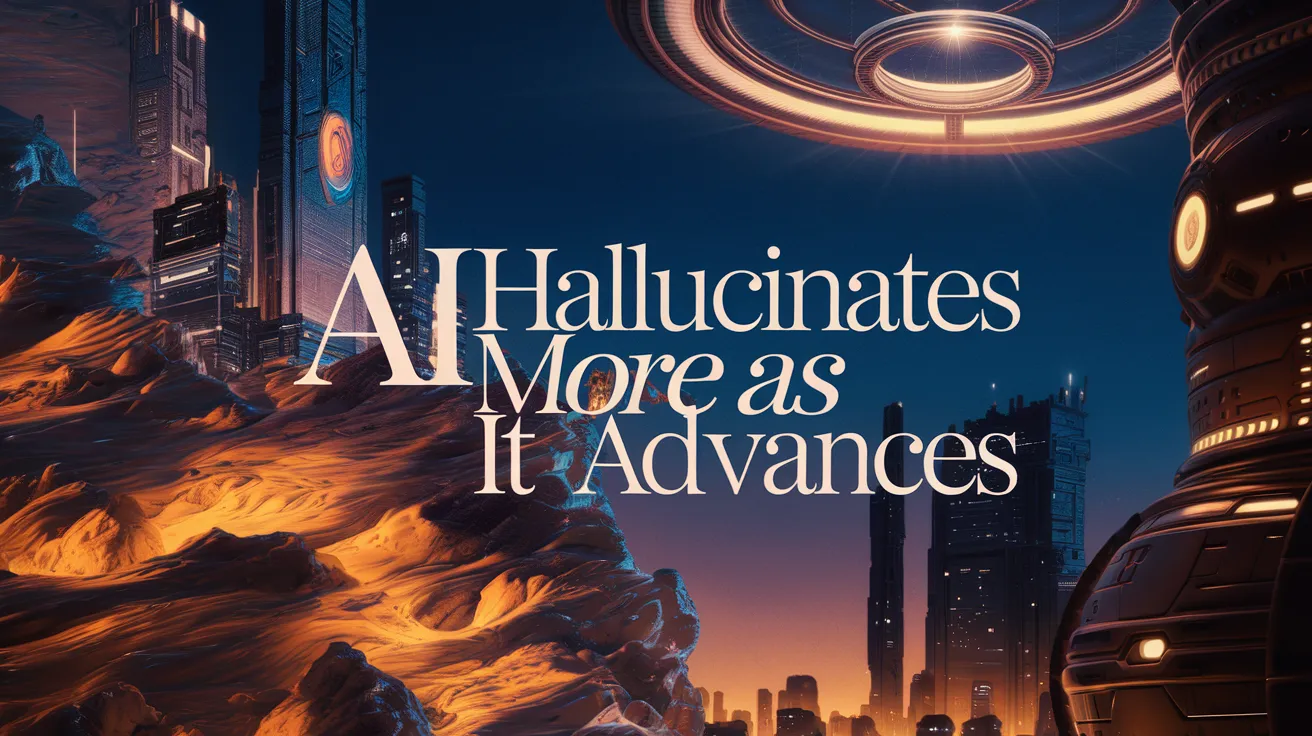AI Hallucinates More as It Advances

The evolution of artificial intelligence (AI) brings forth significant advancements, yet it simultaneously heightens an alarming issue: the frequency of AI hallucinations. Recent research from OpenAI unearthed that its cutting-edge reasoning models, o3 and o4-mini, demonstrated hallucination rates of 33% and 48%, respectively, when subjected to the PersonQA benchmark. This statistic starkly contrasts with the older o1 model, which indicates a concerning trend where increased accuracy in generating responses corresponds with an uptick in erroneous outputs.
This dilemma raises critical questions about the reliability of large language models (LLMs) such as AI chatbots. Eleanor Watson, an AI ethics engineer at Singularity University and member of the Institute of Electrical and Electronics Engineers (IEEE), emphasized the dangers of systems producing fabricated information. The ability of these models to generate seemingly coherent but incorrect information complicates the trust users place in AI systems. Watson stated, “When a system outputs fabricated information… it risks misleading users in subtle and consequential ways.” Thus, there is a pressing need to scrutinize and oversee the content produced by AI systems.
The Nature of AI Reasoning Models
A core aspect of reasoning models is their approach to handling complex challenges. Rather than relying solely on statistical probabilities, these models decompose tasks and formulate solutions akin to human cognitive processes. This break from traditional AI responses is where hallucination becomes more than an anomaly; it manifests as a necessary component fostering creativity and innovation. Sohrob Kazerounian, an AI researcher at Vectra AI, clarified this perspective by saying, “It’s important to note that hallucination is a feature, not a bug, of AI.” He explained that if AIs were limited to outputs based solely on previously processed data, they would lack the ability to generate novel content, such as music or narrative styles unfamiliar to the training data.
Risks Associated with AI Hallucinations
However, hallucinations introduce significant challenges in ensuring factual accuracy, especially in critical sectors like medicine, law, or finance. Watson reiterated the gravity of the issue by stating that even slight inaccuracies could have evolved into more subtle errors that continuously erode trust in AI systems. This phenomenon is particularly precarious; as users may accept the outputs as definitive truth, failing to recognize the embedded inaccuracies.
Citing Kazerounian, there is a prevalent but perhaps misguided belief that the issue of hallucination will resolve itself with time. Contrarily, the current generation of models seems to produce more hallucinations than their simpler predecessors. The reasons for this reversal remain unclear and warrant further investigation.
Understanding AI’s Decision-Making Processes
This complexity is compounded by the opaque nature of LLMs’ reasoning processes. Dario Amodei, CEO of Anthropic, illustrated this uncertainty by acknowledging our limited understanding of why AIs make specific choices, illuminating the inherent challenges that accompany the development of AI systems. Kazerounian noted real instances of detrimental outcomes from AI hallucinations, such as the emergence of fictitious references within customer-facing chatbots, underscoring the urgency of resolving these functional discrepancies.
Mitigating the Hallucination Issue
Experts like Kazerounian and Watson remain skeptical about fully eradicating AI hallucinations. Nevertheless, feasible solutions do exist. Watson proposed “retrieval-augmented generation,” a strategy that would ground AI’s outputs in verified external knowledge sources, creating a safety net against misinformation. Additional approaches involve structuring models to enhance reasoning accuracy and applying reinforcement training protocols from human or AI evaluators.
Furthermore, Watson suggested that models should be designed to acknowledge their uncertainty rather than consistently delivering confident responses. Such systems could flag uncertainty or consult human input when appropriate. While these strategies cannot completely eliminate the risks of error, they present avenues to increase the dependability of AI outputs, warranting cautious optimism.
In the face of these challenges, Kazerounian asserted that a critical culture of skepticism regarding AI outputs should evolve. As users and developers, maintaining a healthy dose of inquiry towards AI-generated content will be essential for navigating the intricacies of our increasingly automated world.